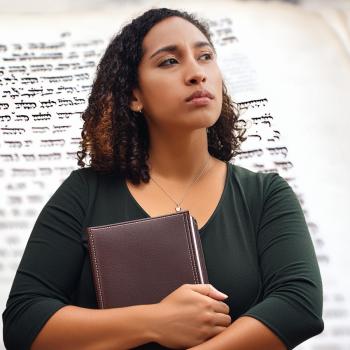Twice last week, I was asked about the “best Bible translation” in order to read to understand as closely as possible what was in the original texts. My answer is not particularly satisfactory but it is the best I have.
Simply, if you want to read something closest to the original text, then the best thing is to learn Greek and Hebrew. Even then, you are reading copies of copies of copies. As far as anyone knows, none of the actual original manuscripts are still in existence.
All translations are interpretive in nature. Some may closer mimic the cadence of the Greek and Hebrew texts available to us, but that doesn’t mean they are necessarily more accurate where the meaning is concerned.
The oldest English translation, The King James Bible, is also the least accurate because it was a translation from Latin texts which were themselves translations from the Greek texts known at the time. Many older, more accurate manuscripts have been uncovered since then.
There are two primary translation options. First, word-for-word. The older American Standard Bible reflects that method. However, remember that Greek and Hebrew word/sentence order are considerably different from standard English, so some words are necessarily re-arranged in order to make sense to us.
Second: “dynamic equivalence” becomes the translation norm. Here an individual or team of translators and scholars study until they believe they understand the meaning of the ancient manuscripts as accurately as possible. However, the actual translation may be very different in word choice and word order than the manuscripts.
We must also consider cultural and literary context in the translation process. Think about the English language for a moment. Many of our words have dramatically different meanings in different settings. Consider the word “bank.” How many different meanings can you come up with quickly? Or how about “bat” or “iron” or “left” or “watch” or “wind.”
They can be verbs or nouns, and refer to wildly different things. All the same word; all spelled the same way; all pronounced the same way. Context is the key.
Now, let’s make it slightly more complicated: consider for a moment British English and US English. Brits have “chips and crisps” but we have “French fries and chips” Their chips are our fries; their crisps are our chips. Translators also need to know regional dialects.
Remember, all translations are interpretative in nature. Scholars work through their own theological grids. They study through the lenses of their own cultures, their own education, their positions of privilege, gender, experiences. And they work with texts which were written in cultures dramatically different from their own. Word meanings often are not clear.
There is no such thing as absolute objectivity in translation. The work of translation is an art, not a science.
So which translation? Generally, I consult many, plus I spent years learning to read both Greek and Hebrew. My background in anthropology, the study of other cultures, also helps with my understanding.
The more I have studied, the less likely I am to say, “This is exactly what it meant to those who were hearing this for the first time.” And I say “hearing” deliberately, not reading.
Nearly universal literacy is a recent development in human history. That, plus the extraordinarily laborious process of creating paper and then copying manuscripts meant that for centuries few read the Bible themselves.
In the last 100 years, the Bible made its way into the hands of most. This is a good thing. The scriptures should not be limited to a tiny minority. Between high-speed printing, the proliferation of translations and the power of electronic communication, we can all read the Bible.
But what has happened now is that Christianity continues to splinter because people think that because they can read the [translated, pre-interpreted] Scriptures, they are experts on biblical understanding.
It’s not that easy.












